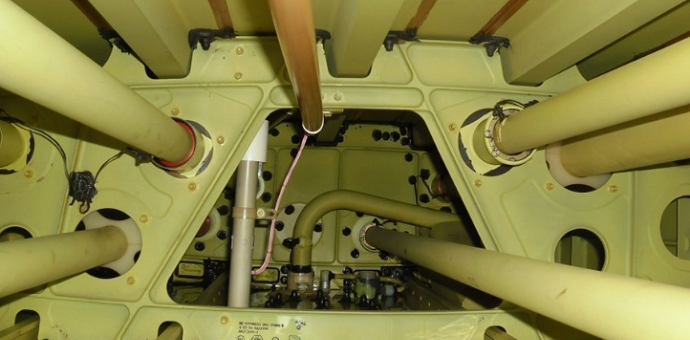Preparation for Entry into the Fuel Tank
It is most important to ensure that all persons who are engaged in the process of Fuel Tank Entry are fully trained on all aspects of the following information to ensure that all precautions are taken and all risks minimised.
Steps which must be taken include the following:
a) Ensure the aircraft is electrically grounded
b) Ensure that Fire Extinguishers are available (typically CO2 would be used for a Fuel Fire
c) Deactivate all Electrical Systems on the Aircraft and suitable placard
d) Defuel the aircraft using the Aircraft Maintenance Manual Procedures
e) Deliver a safe atmosphere for maintenance personnel by ensuring the following
i/ Ensure adequate ventilation
ii/ Follow recommended ventilation techniques
iii/ Properly monitor air in fuel tanks.
The importance of Ventilation
Ventilation is the single most important method of controlling the fire, explosion, and toxic hazards associated with working in an open fuel tank.
The physical structure of airplane fuel tanks presents some unavoidable challenges in ensuring adequate ventilation.
Some of the challenges include dead air spaces and small openings between tank sections that inhibit air flow, ventilation equipment that may not be selected or set up properly, or suspension of ventilation before the entry work is completed. Planning and execution are critical to providing adequate ventilation.
By ensuring that sufficient clean fresh air that is present in the fuel tank, the safer the environment will be for maintenance personnel.
Continuously pushing fresh air into a fuel tank to ensure positive airflow helps to prevent a fuel vapour concentration from reaching its LFL, thus preventing fires and explosions.
The terms used in relation to the flammability are known as the lower flammability limit (LFL) or lower explosive limit (LEL). (Usually expressed as a percentage by volume.)
Fresh air also dilutes the vapor concentration of toxic chemicals, reducing the risk of hazardous exposures.
Issues with Oxygen Depletion
High volumes of fresh air will prevent a condition known as oxygen deficiency.
The normal concentration of atmospheric oxygen in the air is about 21 per cent. At oxygen-deficient levels (19.5 percent and below) a person will begin to exhibit signs of oxygen starvation, including a headache, nausea, drowsiness, and slurred speech.
At increasingly lower oxygen concentrations, more severe reactions occur. Ultimately, death by asphyxiation is possible.
Oxygen deficiency is often caused by physically displacing the oxygen in a space. For example, pumping nitrogen into a fuel tank to prevent fire ignition will cause the oxygen concentration to decrease.
Sofema Aviation Services www.sassofia.com and our sister online training portal Sofema Online www.sofemaonline.com offer both classroom and online (with voice-over) training compliant with the requirements of both EASA and FAA SFAR 88. For details please see our websites or email office@sassofia.com or online@sassofia.com




